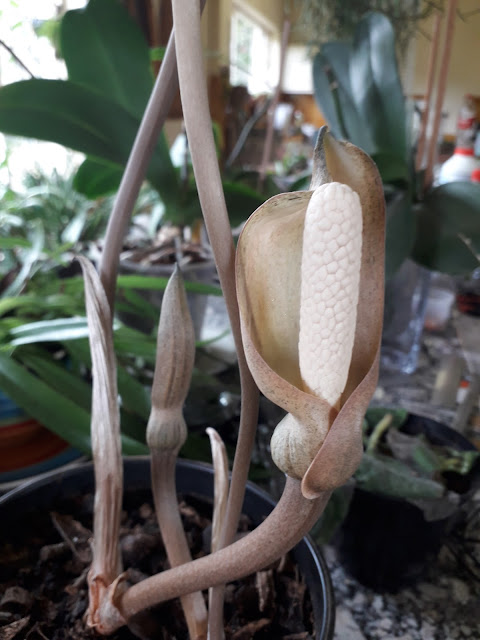Here are a few photographs taken with a cell phone of plants and other things of interest in and nearby to the eMalangeni Forest.
Guided excursions
Please visit one of my websites for my contact details.
Here are a few photographs taken with a cell phone of plants and other things of interest in and nearby to the eMalangeni Forest.
Guided excursions
Microsorum punctatum
The majestic epiphytic fern Microsorum punctatum is found growing as an epiphyte on many of the tall mature trees in the eMalangeni Forest where it is probably the most noticed and numerous epiphyte growing in the forest. Microsorum punctatum adds structure to the forest and gives it a lush tropical appearance.
Description
Microsorum punctatum has a short, creeping rhizome up to 4
mm in diameter and is covered with a thick felt of roots. The fronds are
short-stalked and up to 10 mm apart. The narrowly elliptic lamina is simple,
and up to 1500 x 110 mm. It has a thin leathery texture and is minutely pitted.
The sori are about 1 mm in diameter and are irregularly scattered on the under
surface of the lamina. The specific name punctatum refers to the minutely
pitted or dotted nature of the lamina.
Distribution
Microsorum punctatum is widespread in the temperate and
tropical parts of the Old World, occurring from the Pacific islands, Malesia,
tropical Asia and southern China to India, Madagascar and Africa. In Africa it
occurs from West Africa through central to tropical East Africa to the east
coast of South Africa as far south as Port St Johns. Microsorum punctatum is a
predominantly low-altitude species occurring from near sea level to 1 500 m.
Habitat
In South Africa Microsorum punctatum occurs mostly in hot
and humid swamp and coastal forests, ranging from near sea level to
approximately 750 m. The region experiences a seasonal rainfall of more than 1
000 mm per annum. Microsorum punctatum grows mostly as an epiphyte on trees,
often high above the ground in evergreen forests, mostly in deep shade. They
rarely occur on the ground and when on the ground usually as a lithophyte.
Cultivation.
Microsorum punctatum is one of
the easiest ferns to grow, which is grown extensively in many countries as a
pot plant and garden plant where it is known as Climbing bird's nest fern or
Fishtail fern with many exotic looking horticultural cultivars having been
produced.
Microsorum punctatum is ideal for cultivation both indoors as
well as in the garden provided that it is planted in deep shade, never exposed
to direct sunlight and kept moist at all times. When they receive too much sunlight,
they turn yellow and develop burnt sections on the fronds. When grown indoors
increased humidity is beneficial. The species is best cultivated in a
well-drained humus-rich medium kept moist at all times. A good well drained growing
medium can be made out of equal parts of coarse composted bark, charcoal and
chopped coconut husk.
Traditional uses
A tea is made Microsorum punctatum and taken for coughing
fits. The leaf sap has also been reported to be used as an enema.
Extracts from the leaves have demonstrated anti-bacterial
activity.
Guided excursions
Guided excursions in English, Zulu and German into the eMalangeni Forest and surrounding area including the nearby Tembe Elephant Park can be arranged. Please visit my websites for contact details.
Michael Hickman
02.04.21
please visit my websites at
as well as my other blogs at
http://luthulienvironment.blogspot.com/
http://ecomandurban.blogspot.com/
http://ecoman.co.za/projects/emalangeni.html
Gonatopus angustus is an interesting plant belonging to the plant family Araceae closely related to and often found growing alongside Zamioc...
